 Many years ago a friend and fellow Chiropractor, Dr. Fisher, showed me a new healing technique he had learned called Gau sha. He had been using it on several of his difficult patients and was getting excellent results. The technique seemed very simple and I wondered if maybe I was missing something. How could something so simple be so effective? The technique involved the use of a specialized tool that looked like a very dull butter knife. In this particular case, the tool was made from jade. At the time I asked him about the tool, and he told me that usually these tools were made of either jade, rose quartz, or stainless steel. At that time I did not follow up on how to obtain such a tool until a couple of years later when I found a stainless steel one on Amazon. Even then, the technique just lay dormant somewhere in the back of my mind for a couple more years.
Many years ago a friend and fellow Chiropractor, Dr. Fisher, showed me a new healing technique he had learned called Gau sha. He had been using it on several of his difficult patients and was getting excellent results. The technique seemed very simple and I wondered if maybe I was missing something. How could something so simple be so effective? The technique involved the use of a specialized tool that looked like a very dull butter knife. In this particular case, the tool was made from jade. At the time I asked him about the tool, and he told me that usually these tools were made of either jade, rose quartz, or stainless steel. At that time I did not follow up on how to obtain such a tool until a couple of years later when I found a stainless steel one on Amazon. Even then, the technique just lay dormant somewhere in the back of my mind for a couple more years.
 Three months ago, I encountered a stubborn shoulder pain and restriction case. I could adjust it and make it better for a day, but the problem just kept coming back. As I was feeling the rotator cuff muscles and the lateral shoulder muscles, my attention was drawn to a lot of gritty gristle present in the muscles. This gristle is a sign of old trauma and healing with scar tissue. The trouble with scar tissue is that it is inflexible, and the tough fibrous strands inhibit the circulation of both blood and lymph around the area. Scar tissue is good in the short run to glue injury sites together, but in the long run, it causes chronic dysfunction and pain. This seemed to be the likely reason this shoulder injury was not healing.
Three months ago, I encountered a stubborn shoulder pain and restriction case. I could adjust it and make it better for a day, but the problem just kept coming back. As I was feeling the rotator cuff muscles and the lateral shoulder muscles, my attention was drawn to a lot of gritty gristle present in the muscles. This gristle is a sign of old trauma and healing with scar tissue. The trouble with scar tissue is that it is inflexible, and the tough fibrous strands inhibit the circulation of both blood and lymph around the area. Scar tissue is good in the short run to glue injury sites together, but in the long run, it causes chronic dysfunction and pain. This seemed to be the likely reason this shoulder injury was not healing.
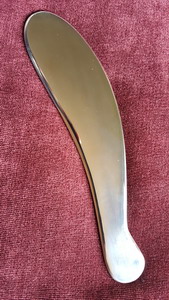 I dug out the Gau sha tool I had bought a couple of years earlier and started using it on the shoulder in the manner I remembered Dr. Fisher showing me. I had no idea whether this would help, but I wasn’t getting lasting results with just adjusting the area and balancing the muscles. A week later, the patient returned to get some more of that muscle work I had done last time. He said about half his pain had gone away within a couple of days after the last visit. Now that sounded promising. I have been experimenting with this technique ever since on a variety of patients.
I dug out the Gau sha tool I had bought a couple of years earlier and started using it on the shoulder in the manner I remembered Dr. Fisher showing me. I had no idea whether this would help, but I wasn’t getting lasting results with just adjusting the area and balancing the muscles. A week later, the patient returned to get some more of that muscle work I had done last time. He said about half his pain had gone away within a couple of days after the last visit. Now that sounded promising. I have been experimenting with this technique ever since on a variety of patients.
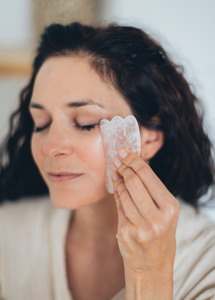 An additional stimulus to explore Gua sha popped up after I got feedback from one lady patient who told me about an Asian friend of hers who did Gua sha on her face every morning to keep the skin supple and wrinkle-free. She had been doing this daily since she was young and said that all the women she knew did this to keep young and beautiful looking. Here is a video of a simple Gua sha facial routine. I tend to listen to health practices that are practiced for many generations as they have stood the test of time. If they did not work, they would have been abandoned. Often times the story about why the practice works are completely fanciful, but that does not mean the practice is any less valuable. Toward this end, I have picked up several rose quartz Gua sha facial tools from Amber over at Elliott’s Nutrition to have available in the office for patients. When I run out, she should have more at her shop.
An additional stimulus to explore Gua sha popped up after I got feedback from one lady patient who told me about an Asian friend of hers who did Gua sha on her face every morning to keep the skin supple and wrinkle-free. She had been doing this daily since she was young and said that all the women she knew did this to keep young and beautiful looking. Here is a video of a simple Gua sha facial routine. I tend to listen to health practices that are practiced for many generations as they have stood the test of time. If they did not work, they would have been abandoned. Often times the story about why the practice works are completely fanciful, but that does not mean the practice is any less valuable. Toward this end, I have picked up several rose quartz Gua sha facial tools from Amber over at Elliott’s Nutrition to have available in the office for patients. When I run out, she should have more at her shop.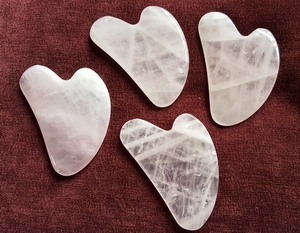 $12
$12
As I was researching for this article, I discovered that my technique was not the same as the traditional Gua sha from China. Gua sha means scraping, and the goal is to scrape the skin hard enough to cause bleeding and bruising beneath the skin in order to “bring fresh blood to the area.” This is part of the “fanciful story” behind the practice. What actually happens is well described in this video by Dr. Nikita Vizniak, a former student of my brother’s.
What is IASTM? – Dr. Nikita Vizniak prohealthsys.com
|
As I researched further, I found that what I was doing with patients more accurately is described as IASTM – Instrument Assisted Soft Tissue Mobilization, an outgrowth of a Chiropractic technique called Graston. This is the more modern derivation of Gua sha that no longer looks for bleeding or bruising, but instead, the goal is to remove (break up) adhesions and restrictions in the connective tissue that holds all the muscles, tendons, and organs in place.
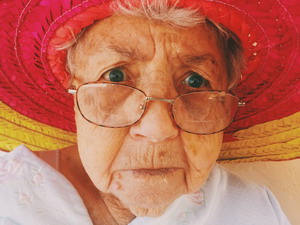 Connective tissue (also called fascia) is the spider web or net of fibrous tissue that holds everything where it belongs. We see this most obviously in our faces as we age. As the connective tissue loses elasticity and tightness, everything sags. Gravity is always pulling on this tissue and gradually it wins the battle as the health of the connective tissue wanes with age and injury. Any time we have an injury in which there is any tissue tearing, such as in an auto accident, a fall, lifting injuries, and so on, the connective tissue immediately triggers the specialized cells in the connective tissue, called fibrocytes, to form scar tissue to patch up the damage. This is a ‘first line of defense’ action like putting on a bandage. These fibrocytes secrete a protein glue to hold the injured area together while damaged blood vessels, muscles, tendons, and what not slowly heal. In fact, the connective tissue continuously secretes a little bit of this glue continuously, but the normal full range of motion we should be making all the time breaks it up and only leaves fibrous tissue in areas that are not stretched. This is why stretching is important. This is how “move it or lose it” happens.
Connective tissue (also called fascia) is the spider web or net of fibrous tissue that holds everything where it belongs. We see this most obviously in our faces as we age. As the connective tissue loses elasticity and tightness, everything sags. Gravity is always pulling on this tissue and gradually it wins the battle as the health of the connective tissue wanes with age and injury. Any time we have an injury in which there is any tissue tearing, such as in an auto accident, a fall, lifting injuries, and so on, the connective tissue immediately triggers the specialized cells in the connective tissue, called fibrocytes, to form scar tissue to patch up the damage. This is a ‘first line of defense’ action like putting on a bandage. These fibrocytes secrete a protein glue to hold the injured area together while damaged blood vessels, muscles, tendons, and what not slowly heal. In fact, the connective tissue continuously secretes a little bit of this glue continuously, but the normal full range of motion we should be making all the time breaks it up and only leaves fibrous tissue in areas that are not stretched. This is why stretching is important. This is how “move it or lose it” happens.
 Well, if we don’t properly stretch and rehabilitate injured areas, this glue hardens and becomes permanent. This physically blocks proper blood and lymph flow and restricts muscle movement. This in turn allows toxic wastes to build up in the area creating chronic pain and dysfunction. Gua sha (or IASTM) is a way to break down these deposits of glue that are gumming up the works. As we do this, better circulation is stimulated as the glued-down blockages are released. This is the “fresh blood” the old Chinese medicine was after. The improved circulation also brings in white blood cells to eat up the old glue as well as stimulate the tissues to finish their healing process. It is this circulation stimulation and fibrocyte activation to build new and improved connective tissue nets that provide the rejuvenating effects for keeping the face young looking. Add in some healing herbs, as in my skin rejuvenation formula, along with some red light therapy and you have some serious power to fight facial sag. These techniques equally fight chronic pain caused by old injuries and bad postural habits. Repetitive stress injuries also fall into this same paradigm.
Well, if we don’t properly stretch and rehabilitate injured areas, this glue hardens and becomes permanent. This physically blocks proper blood and lymph flow and restricts muscle movement. This in turn allows toxic wastes to build up in the area creating chronic pain and dysfunction. Gua sha (or IASTM) is a way to break down these deposits of glue that are gumming up the works. As we do this, better circulation is stimulated as the glued-down blockages are released. This is the “fresh blood” the old Chinese medicine was after. The improved circulation also brings in white blood cells to eat up the old glue as well as stimulate the tissues to finish their healing process. It is this circulation stimulation and fibrocyte activation to build new and improved connective tissue nets that provide the rejuvenating effects for keeping the face young looking. Add in some healing herbs, as in my skin rejuvenation formula, along with some red light therapy and you have some serious power to fight facial sag. These techniques equally fight chronic pain caused by old injuries and bad postural habits. Repetitive stress injuries also fall into this same paradigm.
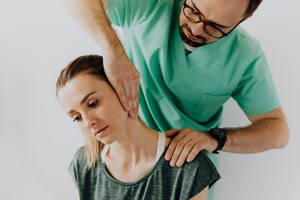 This process is what my fingers were finding and what I intuitively tried to correct in my patients. I can feel the bits of “glue” (facial adhesions) under my fingertips, and I use the Gau sha tool to break them up and soften them. I have to be careful not to do too much at one time, as the broken glue pieces signal macrophage white blood cells to come in and eat them up. This process produces recovery inflammation, which while good, can be uncomfortable. I am not into pain, so I only like to do a little at a time. Sometimes a lot of pain and trauma is good to trigger stem cell production when done just the right way. For instance, my brother was telling me about a chronic hip joint problem he has that he is going to do “dry needling” on to trigger healing. This involves very long acupuncture needles that he stabs deep into the hip joint capsule many times to induce bleeding and stimulate a healing process. It does not sound like fun to me! There is a $20,000 sonic percussion tool some physical therapists have that does a similar thing to joints – very pricy.
This process is what my fingers were finding and what I intuitively tried to correct in my patients. I can feel the bits of “glue” (facial adhesions) under my fingertips, and I use the Gau sha tool to break them up and soften them. I have to be careful not to do too much at one time, as the broken glue pieces signal macrophage white blood cells to come in and eat them up. This process produces recovery inflammation, which while good, can be uncomfortable. I am not into pain, so I only like to do a little at a time. Sometimes a lot of pain and trauma is good to trigger stem cell production when done just the right way. For instance, my brother was telling me about a chronic hip joint problem he has that he is going to do “dry needling” on to trigger healing. This involves very long acupuncture needles that he stabs deep into the hip joint capsule many times to induce bleeding and stimulate a healing process. It does not sound like fun to me! There is a $20,000 sonic percussion tool some physical therapists have that does a similar thing to joints – very pricy.
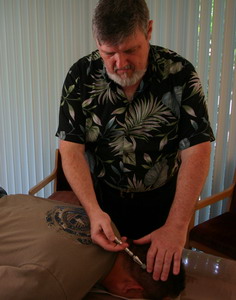 So this article is to introduce you to the new toy I am playing with in the office with some of you. This adds a new dimension to my regular practice of neurologic rebalancing of your muscles and joints to re-establish coordinated movement to relieve pain. This alone is usually enough to “fix things” with recent minor injuries where things get “out of place.” But sometimes the build-up of fascia glue where it does not belong has to be dealt with to allow for a normal motion to take place.
So this article is to introduce you to the new toy I am playing with in the office with some of you. This adds a new dimension to my regular practice of neurologic rebalancing of your muscles and joints to re-establish coordinated movement to relieve pain. This alone is usually enough to “fix things” with recent minor injuries where things get “out of place.” But sometimes the build-up of fascia glue where it does not belong has to be dealt with to allow for a normal motion to take place.
Well, one of the main reasons I became a Chiropractor was so that I would always be learning new things, so I am happy to add one more tool to my tool kit of healing.
Take care,